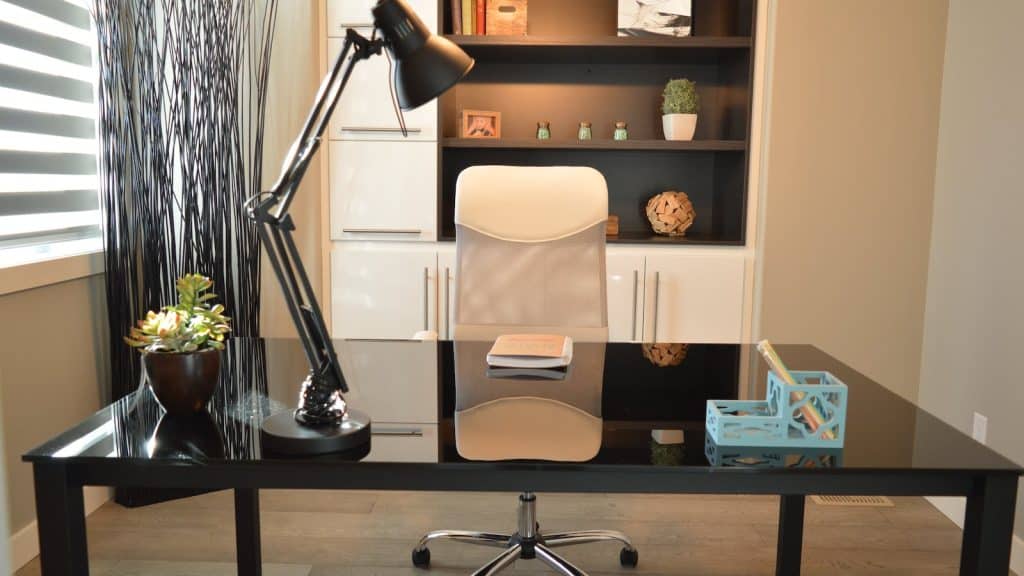Are you tired of feeling like a wobbly wobble-walker while working from home? Well, fear not because we’re here to help you find the perfect ergonomic chair for your home office!
An ergonomic chair can help improve your posture, reduce the risk of back pain, and enhance your overall productivity. In this guide, we’ll explore the essential factors to consider when choosing the perfect ergonomic chair for your home office.
Understanding the Importance of Ergonomics

Before delving into the specifics of choosing an ergonomic chair, it’s essential to understand why ergonomics are so important.
Ergonomics is the science of designing and arranging the workplace to fit the worker rather than forcing the worker to adapt to the workspace. Regarding chairs, ergonomic designs aim to reduce the physical stress and discomfort associated with sitting for extended periods.
Ergonomic chairs are designed to support the curve of your spine, maintain proper posture, and reduce the risk of musculoskeletal disorders. These chairs can make a significant difference in your comfort and overall well-being during long work hours.
Assessing Your Workspace
The first step in choosing an ergonomic chair is assessing your workspace. To do this effectively, consider the following aspects:
1. Available Space
Take measurements of your office area, including the space available for the chair. Ensure the chair you select fits comfortably within your workspace, allowing easy movement and proper positioning.
2. Desk Height
Your chair and desk should complement each other. Ensure that the chair’s height can be adjusted to match the height of your desk. This alignment is crucial for maintaining proper posture while working.
3. Flooring
Consider the type of flooring in your home office. If you have carpet, you might need a chair with larger casters to move smoothly. On hard floors, rubberized casters or a chair mat may be necessary to protect your floor and provide mobility.
Key Features to Look for in an Ergonomic Chair

When choosing an ergonomic chair, there are several key features to consider:
4. Adjustable Seat Height
One of the most fundamental features of an ergonomic chair is the ability to adjust the seat height. A chair with adjustable seat height ensures that your feet can comfortably touch the ground, promoting proper posture and reducing the risk of strain.
5. Lumbar Support
Proper lumbar support is vital for maintaining the natural curve of your lower spine. Look for chairs with adjustable lumbar support to ensure they align with your lower back’s natural curvature.
6. Seat Depth and Width
Your chair should have a seat that accommodates your body size and shape. Look for a seat depth that allows you to sit comfortably with your back against the chair’s backrest while leaving a few inches between the front of the seat and your knees.
7. Backrest
The backrest should provide adequate support to your spine. It’s ideal if the backrest can be adjusted in height and angle to match your body’s contours. A reclining backrest can help you take breaks and change positions throughout the day.
8. Armrests
Adjustable armrests can support your arms and shoulders, reducing the strain on your upper body. They should be at a height that allows your shoulders to relax and your elbows to rest comfortably.
9. Swivel and Mobility
The chair should have a 360-degree swivel and smooth-rolling casters to allow for easy movement within your workspace. This mobility ensures you can reach various parts of your desk without straining.
10. Fabric and Padding
Consider the material of the chair and the quality of the padding. Look for breathable, durable fabric that provides both comfort and support. Chairs with memory foam or high-density foam padding are often more comfortable for extended sitting.
Trying Before Buying
11. Testing the Chair
When choosing an ergonomic chair, it’s highly recommended to try it out before making a purchase. Visit a showroom if possible, or if buying online, ensure that the chair comes with a flexible return policy. Sitting in the chair will help you determine whether it provides the proper support and comfort for your body.
Budget Considerations
12. Setting a Realistic Budget
Ergonomic chairs can vary widely in price, so it’s essential to establish a budget that suits your needs. While more expensive chairs often come with additional features and higher build quality, there are affordable options that can still provide excellent ergonomic support. Don’t overspend if it’s not necessary for your specific requirements.
Additional Considerations
In addition to the features and factors mentioned above, there are a few more considerations to keep in mind:
13. Aesthetics
Your chair should not only provide comfort but also fit the overall aesthetic of your home office. Consider the chair’s design, color, and style to ensure it complements your workspace.
14. Maintenance
Check if the chair is easy to clean and maintain. Over time, chairs can accumulate dust and dirt, so choose one that allows straightforward cleaning.
15. Warranty
Review the warranty offered by the manufacturer. A longer warranty can provide peace of mind, indicating the manufacturer’s confidence in the chair’s durability and performance.
Conclusion
Choosing the right ergonomic chair for your home office is a crucial decision that can significantly impact your comfort, health, and productivity.
Considering the abovementioned factors and trying out chairs before purchasing, you can find the perfect ergonomic chair that suits your needs, supports your well-being, and enhances your daily work experience.
A well-chosen ergonomic chair is an investment in your health and work performance, ensuring that you can work comfortably and efficiently from your home office for years to come.


